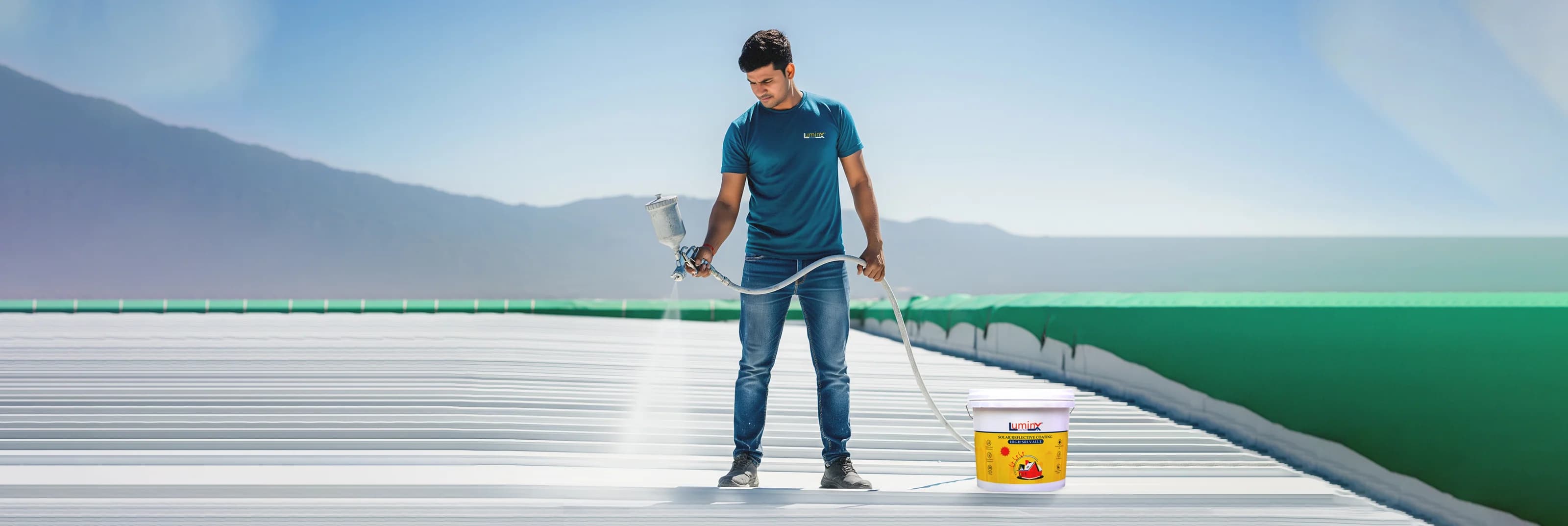We're loading the full news article for you. This includes the article content, images, author information, and related articles.
A breakthrough roof coating developed by Australian scientists that reduces surface temperatures by up to 6°C could offer a low-cost solution to combat rising urban heat and cut energy bills in Kenyan cities.

Researchers at the University of Sydney have developed a revolutionary paint-on roof coating that can cool surfaces to 6°C below the ambient air temperature, even in direct sunlight. This technology, known as passive radiative cooling, offers a promising, low-energy solution for mitigating the effects of extreme heat in urban environments across Kenya and East Africa.
The innovative coating works through a dual mechanism. Firstly, it reflects approximately 96% of incoming solar radiation, preventing the sun's energy from being absorbed as heat. Secondly, it has a high thermal emittance, meaning it efficiently radiates absorbed heat back into the cold of outer space, particularly on clear nights. "The paint, even during the day when the sun is out, can be cooler than the air around it," stated Professor Chiara Neto of the University of Sydney, the study's lead author, in a report published on Friday, October 31, 2025 (EAT).
The implications for a rapidly urbanising city like Nairobi are significant. The city is already experiencing an 'urban heat island' effect, where dense concentrations of concrete buildings, tarmac roads, and other infrastructure absorb and retain more heat than natural landscapes, leading to higher temperatures than in surrounding rural areas. Data indicates that average air temperatures in Nairobi rose from 18.8°C in the 1950s to 19.5°C by the 2000s, a trend exacerbated by the loss of 22% of the city's green spaces between 1988 and 2016. This phenomenon increases energy demand for air conditioning, elevates air pollution, and poses health risks, particularly from heat-related illnesses.
This new coating could directly counter this effect. By reflecting sunlight and reducing surface temperatures, 'cool roofs' can lower indoor temperatures, decrease reliance on costly air conditioning, and contribute to cooler city-wide temperatures. A study by the Lawrence Berkeley National Laboratory in the U.S. found that cool exterior walls and roofs can lead to annual energy cost savings of up to 11% for retail stores and 8.3% for single-family homes in warm climates. For Kenya, where millions lack access to affordable cooling solutions, this passive technology presents a vital adaptation strategy.
Passive radiative cooling paints contain specialised materials, such as specific polymers and nanoparticles, that are engineered to be highly reflective to the solar spectrum while being highly emissive in the specific infrared wavelengths that can pass through the Earth's atmosphere. The coolness of the painted surface also has a secondary benefit: it encourages condensation. Professor Neto noted that the material can extend the period for dew formation by several hours, effectively harvesting small amounts of water from the atmosphere.
While several research teams, including those at Purdue University and the University of California, have developed similar paints, widespread commercial availability has been limited by factors like cost and scalability. However, the University of Sydney team is now commercialising a water-based version of their coating. Professor Neto stated that the paint is expected to cost little more than standard premium paints, making it a potentially accessible option for retrofitting existing buildings. While a broad commercial release date is not set, experts anticipate such technologies will be widely available before 2030.
As Kenya faces projections of more frequent and intense heatwaves, the need for sustainable cooling solutions is urgent. Extreme heat threatens public health, agricultural productivity, and economic stability, with millions of potential labour hours already being lost annually due to heat exposure. The Kenyan government has recognised this challenge, adopting a National Cooling Action Plan in May 2022 to promote energy-efficient and sustainable cooling. Technologies like passive radiative cooling paint align directly with these national goals, offering a way to enhance climate resilience without increasing greenhouse gas emissions or straining the national power grid. By reducing the energy load from conventional cooling systems, this innovation could support a more sustainable development path for Kenya and the wider East African region.
Keep the conversation in one place—threads here stay linked to the story and in the forums.
Other hot threads
E-sports and Gaming Community in Kenya
Active 7 months ago
Popular Recreational Activities Across Counties
Active 7 months ago
The Role of Technology in Modern Agriculture (AgriTech)
Active 7 months ago
Investing in Youth Sports Development Programs
Active 7 months ago